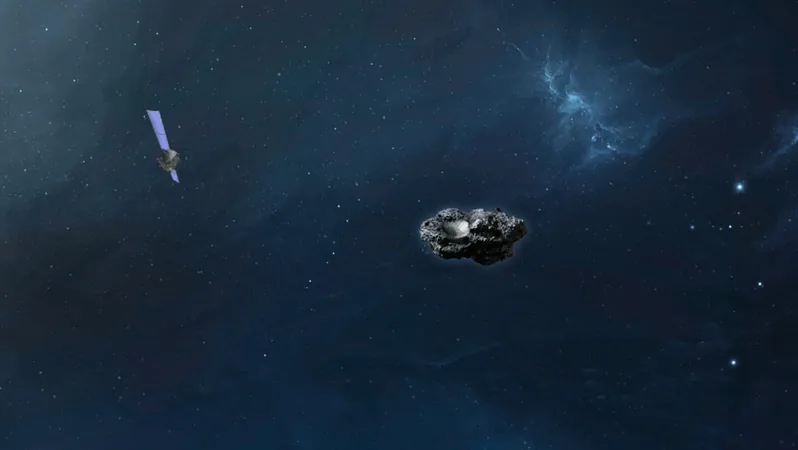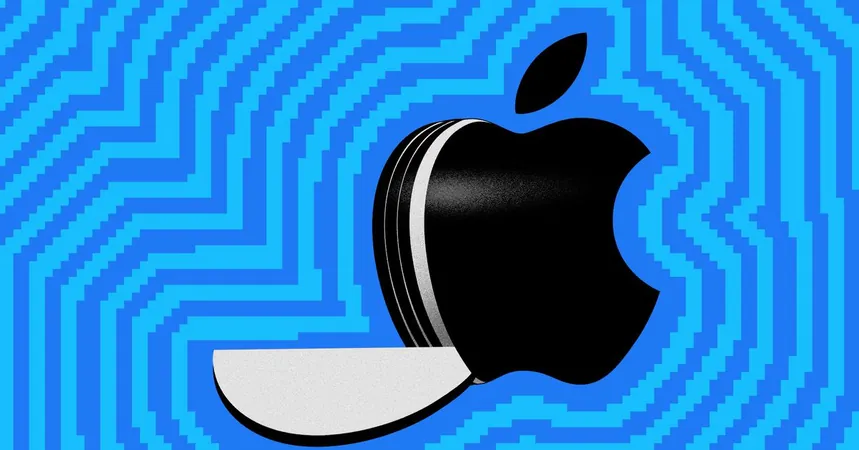
Launch Countdown: ESA's Hera Mission Set to Uncover Asteroid Secrets This Monday!
2024-10-07
Author: Ying
Launch Countdown: ESA's Hera Mission Set to Uncover Asteroid Secrets This Monday!
This Monday, October 7, at 10:52 a.m. ET, excitement will soar as SpaceX is poised to launch the Hera spacecraft, marking another significant leap in planetary defense efforts. Departing from Cape Canaveral Launch Complex 40 in Florida, the Hera mission is a collaborative endeavor between the European Space Agency (ESA), NASA, and SpaceX, building upon the groundbreaking findings from NASA's previous DART (Double Asteroid Redirection Test) mission.
In 2021, NASA's DART spacecraft took to the skies on the powerful Falcon 9 rocket and traveled an astounding 6.8 million miles to impact the binary asteroid system comprised of Didymos — the primary body — and its moonlet, Dimorphos. The objective of DART was nothing short of revolutionary: it aimed to assess whether a deliberate collision could alter Dimorphos's orbit as a means to deflect asteroids that might threaten Earth. On September 26, 2022, DART made a high-speed impact, traveling at nearly four miles per second, successfully reducing Dimorphos's orbital period around Didymos by approximately 32 minutes. The results confirmed that the kinetic impactor technique is a feasible method for planetary defense.
But the mission doesn't end there. Enter the Hera spacecraft, which will take on the crucial role of a detailed follow-up to DART's initial findings. With a weight of 2,676 pounds fully fueled, Hera is ingenious in its design, featuring a box-shaped structure based on a central tube, with two expansive solar panel wings that unfold to generate power during its journey.
Equipped with cutting-edge instruments such as Asteroid Framing Cameras, a Thermal Infrared Imager, and two CubeSats named Juvenitas and Milani, Hera will dive deeper into understanding the aftermath of DART's impact. By late 2026, Hera will reach Didymos and Dimorphos, where it will conduct unprecedented observations including mass measurements and analyses of potential changes triggered by the DART collision. This exciting validation process has the potential to enhance our methods of defending our planet from asteroids.
While the Hera spacecraft brings optimism for future planetary defense technologies, it’s essential to note that there are currently no threats posed by these asteroids to Earth. The ongoing tests are purely future-focused, exploring how humanity can protect itself from cosmic dangers.
Amidst this thrilling launch, SpaceX has also experienced recent challenges. Following a DART mission success, SpaceX’s Falcon 9 rocket had an abnormal deorbit burn during the launch of NASA Crew-9 to the International Space Station. Fortunately, no crew members were harmed, and investigations into this incident are underway. The FAA has provided approval for SpaceX to continue with the Hera mission while it reviews the situation, emphasizing rigorous safety standards as the foundation for upcoming flights.
As scientists and engineers eagerly await the launch, the Hera mission offers a glimpse into humanity's capabilities in planetary protection, showcasing how collaborative efforts in space exploration can ultimately benefit life on Earth. Keep your eyes on the sky; the future of planetary defense is launching soon!






 Brasil (PT)
Brasil (PT)
 Canada (EN)
Canada (EN)
 Chile (ES)
Chile (ES)
 España (ES)
España (ES)
 France (FR)
France (FR)
 Hong Kong (EN)
Hong Kong (EN)
 Italia (IT)
Italia (IT)
 日本 (JA)
日本 (JA)
 Magyarország (HU)
Magyarország (HU)
 Norge (NO)
Norge (NO)
 Polska (PL)
Polska (PL)
 Schweiz (DE)
Schweiz (DE)
 Singapore (EN)
Singapore (EN)
 Sverige (SV)
Sverige (SV)
 Suomi (FI)
Suomi (FI)
 Türkiye (TR)
Türkiye (TR)